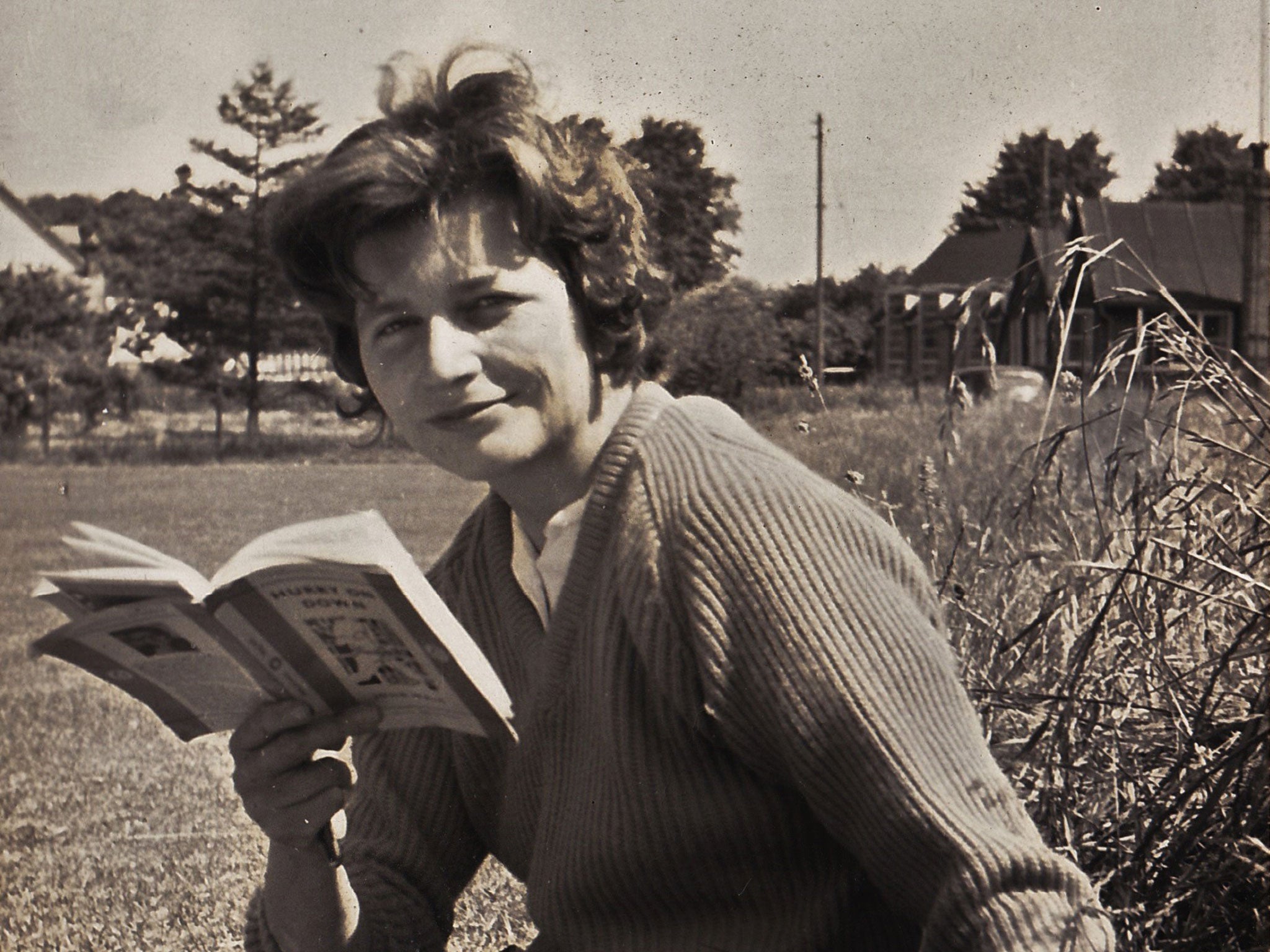Diana Pullein-Thompson: Author who wrote the first of her pony books at 14 and became a leading figure in the genre
Her stories mix Cinderella characters – both riders and their horses – with hard-earned accurate detail from experience

The last survivor from the trio of writing sisters whose names for many years were synonymous with pony books, Diana Pullein-Thompson, wrote 30 mostly equestrian children’s stories plus five books for adults. Composed at speed, with more concentration on plot than style, her pony stories mix Cinderella characters – both riders and their horses – with hard-earned accurate detail learned from daily experience of grooming, riding and competing with the real thing.
Born to well-connected parents who never had much money, Diana aged six, her twin Christine, her 18-month older sister Josephine and 12-year-old brother Denis moved to a former dower house the Oxfordshire village of Peppard near Henley-on-Thames in 1931. With its own spinney plus five acres of land, this was an ideal playground for their lifelong love of animals and in particular horses.
With Denis away at Eton, the girls’ brief and unsatisfying spell at Wychwood School was soon abandoned. The school’s final verdict on the girls – “Gaiety and high spirits will not find them jobs in life” – was to prove wrong on every count. Home education followed at the hands of a communist governess who soon became a family friend.
Possessing no radio, the girls read voraciously. Diana particularly loved poetry, and at one time was able to recite the whole of Oscar Wilde’s The Ballad of Reading Gaol by heart. There was also constant interaction with animals and the general life of a countryside still preserving many of its traditional ways. At home there was conversation packed with references understood only within the family. All formal education was finally abandoned when Diana, aged 14, and her sisters opened the Grove Riding School, specialising in breaking-in and schooling horses while also teaching general horsemanship.
This began in 1939, with a second school opening in Wolvercote after the war. Clients including both the future Aga Khan, and evacuee children who would often work in the stables in return for their lessons. Riding to hounds and constant winners in local events, the three sisters were often appointed judges at local gymkhanas while still in their teens. By this time they had already collaborated on their first Pony story, It Began with Picotee, finally published in 1946.
Inspired by her mother Joanna Cannan, herself a successful novelist, Diana had previously published in the family magazine before starting on her first novel, the very successful I Wanted a Pony, when she was still 14. It, too, was published in 1946. Later dismissed by its author as “over-dramatised and trivial”, it tells how young Augusta with her unfancied grey pony Daybreak goes on to win rosettes to the disbelief of her snooty cousins. Diana went on to produce a book every year until motherhood intervened. More stories were to follow at the same rate 10 years after that.
Of the two she liked best, Cassidy in Danger (1979, republished in 1990 as This Pony is Dangerous), describes how teenage Katie, who comes from a one-parent family and still cannot read, saves a pony about to be destroyed because of faults caused by previous bad handling. Diana’s other favourite, Ponies in Peril (1979), features six ponies saved at the last moment from the abattoir. Never shirking from the darker side of the competitive equine world, Diana, like her sisters, offered readers stories with happy endings but with plenty of incident and occasional hardship and experience of loss along the way. Prolonged easy escapism was never an option for any of them.
With their schools closing in 1952, the twins decided to try professional riding in Virginia, America. But Diana was then diagnosed with TB and spent six months in bed. After a long convalescence in a Swiss sanatorium, courtesy of the NHS, she returned to Britain to work in a literary agency before finally becoming a full-time writer.
By 1956 she was sufficiently recovered to make the journey from John O’Groats to Land’s End on her favourite pony, Favorita. This took 42 days, but writing about it afterwards had to wait till her last pony story, The Long Ride Home (1996), which finally drew on memories of this experience. In 1959 she married the art historian and museum director, Dennis Farr, with whom she had two children, Benedict, and Joanna, who later became a nurse.
Living in Haslemere, Surrey, Diana still found time to campaign for her favourite causes. These included support for the establishment of the Public Lending Right, and PEN, a group of writers devoted to defending attacks on other authors’ rights and freedoms at home and abroad.
In 1996 the three sisters co-operated on a joint memoir of their childhood, Fair Girls and Grey Horses. It describes some golden times, with their permanently “merry-hearted” mother (Diana’s phrase) always on hand to encourage, stimulate and amuse. Always happy to have her beloved children around her, she still banned all equine conversation, except at tea, to stop them from developing into “horsey bores”. This they never were, and their joint autobiography, reprinted by Alison & Busby in 2014, richly deserves a place in the annals of eccentric British childhoods.
Predeceased by her husband in 2011, Diana celebrated her 90th birthday in a retirement home in Ditching, East Sussex before dying three weeks later, her much-loved rescue dog Bonnie with her to the last.
Diana Pullein-Thompson, children’s writer: born 1 October 1925; married 1955 Dennis Farr (died 2011; one daughter, one son); died Ditching, East Sussex 21 October 2015.
Subscribe to Independent Premium to bookmark this article
Want to bookmark your favourite articles and stories to read or reference later? Start your Independent Premium subscription today.

Join our commenting forum
Join thought-provoking conversations, follow other Independent readers and see their replies